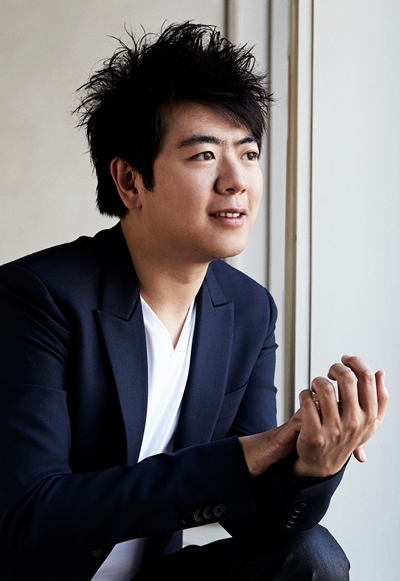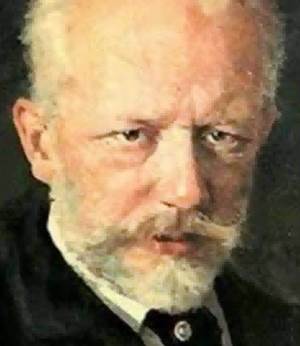Piano wizardry rules as Chinese star Lang Lang mixes Chopin, calendar’s worth of Tchaikovsky
 Review: Pianist Lang Lang in recital, presented by the Lyric Opera of Chicago at the Civic Opera House.
Review: Pianist Lang Lang in recital, presented by the Lyric Opera of Chicago at the Civic Opera House.
By Lawrence B. Johnson
Pianist Lang Lang’s recital May 9 at the Civic Opera House was, at its best, a display of brilliance of a high order. Taken end to end, it was also a curious affair.
To say this lionized, still infectiously youthful Chinese pianist – he turns 33 on June 14 — is a technical wizard may be understatement. Lang Lang is one demonic virtuoso for whom the most daunting technical demands seem more like expressive opportunities than hazards of execution.
 Virtuosity converged with poetry where Lang Lang intersected with Chopin’s four Scherzos. Aside from the first of the series (B minor, Op. 20), in which the pianist’s haste tended to obscure details, the artistic effect was as satisfying as the sheer prestidigital display was impressive.
Virtuosity converged with poetry where Lang Lang intersected with Chopin’s four Scherzos. Aside from the first of the series (B minor, Op. 20), in which the pianist’s haste tended to obscure details, the artistic effect was as satisfying as the sheer prestidigital display was impressive.
Lang Lang made an especially thrilling traversal of the third Scherzo (C-sharp minor, Op. 39), whipping up its titanic emotional storms and yet finding profound spiritual relief in contrast: strength and speed in the first instance giving way to feathery finesse and delicately brushed lyricism in the second. Here also was Chopin’s essential rhythmic ebb and flow as Lang Lang’s powerful left hand provided the reference point for the right hand’s free excursions.
That said, one might also suggest that a foreshadowing of Chopinesque romanticism crept into Lang Lang’s stylistically fanciful approach to Bach’s “Italian” Concerto. Whereas the brisk outer movements possessed all the energy, clarity and rhythmic spring one might wish for in Bach at his brightest, Lang Lang’s dreamy version of the slow movement was almost amusingly not Baroque. Beautiful, yes, in a 19th-century manner of speaking. It was as if the harpsichord had been left behind in that earlier time – as a pianist indulged himself in what a piano can do.
It was the knowledge of what this particular pianist can do that had one wondering why Lang Lang would devote most of the first half of his recital to Tchaikovsky’s series of character pieces collectively called “The Seasons.” Commissioned to run monthly in a popular Russian music magazine, these 12 bagatelles were intended for performance by accomplished amateurs. They might even be thought of as teaching pieces, and with four or five exceptions, that’s the impression they give.
 Each of Tchaikovsky’s little essays came with an evocative title – “January: By the Fireside,” “February: Carnival,” “March: Lark’s Song,” and so forth – and each was headed by a few lines of inspirational text drawn by the publisher from prominent Russian authors.
Each of Tchaikovsky’s little essays came with an evocative title – “January: By the Fireside,” “February: Carnival,” “March: Lark’s Song,” and so forth – and each was headed by a few lines of inspirational text drawn by the publisher from prominent Russian authors.
I’m sitting there listening to a hugely gifted pianist turning through these pages, and thinking: This man is over-qualified. The Tchaikovsky collection brought to mind Beethoven’s two Sonatas, Op. 49, teaching pieces that concert pianists play only when doing a complete cycle of the 32 sonatas. They just aren’t that engaging as serious fare; neither are most of the pieces in “Seasons.”
In fairness, Lang Lang made appealing work of June’s familiar “Barcarolle,” the one work from the collection that has found independent life, as well as the ruminative “Autumn Song” (October), the fleet scherzo “Reaper’s Song” (July) and the lusty “Ballroom Waltz” that caps the series.
As a Mother’s Day tribute to his own mother, who was present, Lang Lang offered as an encore a quiescent Chinese folk song called “Carol Dance” Then he returned once more, for a slam-bang finish — a flamboyant flash through the Turkish rondo that crowns Mozart’s Piano Sonata in A, K. 311. Very fast, loud, crashing, a whole Janissary band unleashed by this solitary figure at the keyboard. It didn’t have much to do with Mozart, but an adoring throng made its delight known with a roar.
Tags: Lang Lang, Lyric Opera of Chicago

